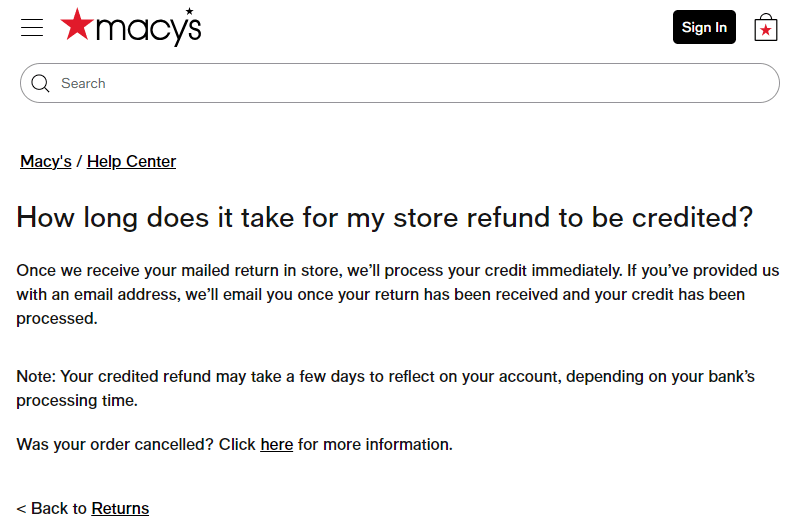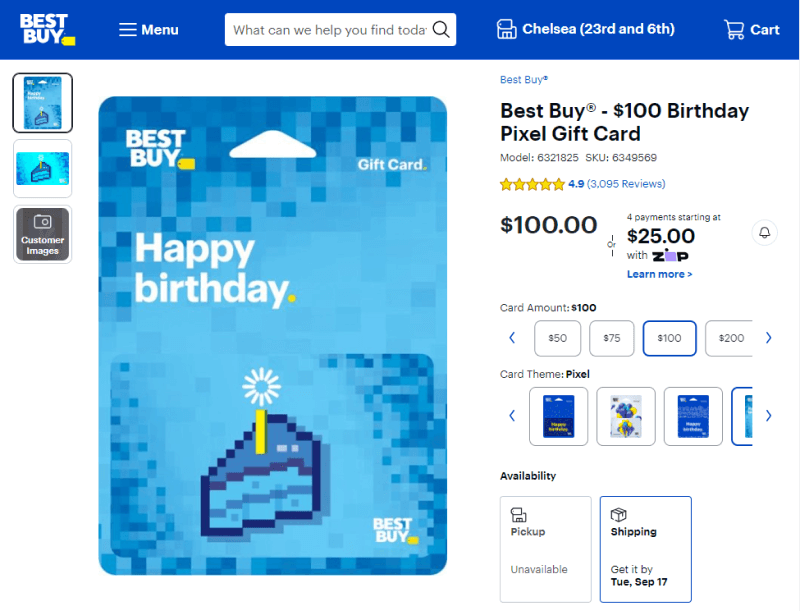Store Credit Refunds: A Complete Guide for Retailers
Today, shopping online has become an integral part of our lives. Many shoppers expect excellent service while buying online, including reliable refund options. Did you know that if a store allows convenient returns, 98% of consumers will repeat a purchase there?
Refunds are often a pain point for merchants and customers, but they are also a part of the shopping process. Store credit refunds offer a promising solution by transforming a negative experience into a new purchase opportunity.
Besides store credit as a refund option, you can discover alternative and powerful ways to use these credits to magnetize sales. However, to achieve remarkable results and deliver an exceptional experience, you must have a comprehensive understanding of this tool.
What is Store Credit?
Store credits are digital vouchers an online store gives to a customer instead of cash to make purchases there. Retailers assign these vouchers to the client’s account as a refund for returned items or as a promotional incentive.
Store Credit vs Refund
Store credit is a specific type of refund offered by retailers. It is like a voucher that can be used only within the same store, while refunds are usually cash returns.
For ecommerce businesses, it is beneficial to have store credits as they ensure money turnover. If the item doesn’t suit, the customer gets a store credit refund and buys another product in the same store.
How You Can Use Store Credits
Store credit is a robust tool that can significantly enhance your ecommerce business. Besides the refund function, it has other purposes that help retailers attract more sales. Let’s explore 5 types of store credit that open up new opportunities for further growth.
#1 Return and Exchange Credit
When a delivered product doesn’t meet customer expectations, they often request a refund. As an alternative, retailers offer store credits instead of cash. Customers may use these store credits to pay for other products within the store and only pay extra when the products are more expensive.
Online stores apply different return policies to meet their needs, but adding store credits as a refund option may significantly enhance the return process. By using these credits, it is possible to create flexible shopping that delivers exceptional experience.
Read more: 10 Examples of Store Credit for E-Commerce.

#2 Partial store credit refund
Most retailers offer customers full-price returns, but some websites practice partial store credit refunds. This type of refund assures that half of the product price will be returned in the form of store credits. The amount of store credit offered can vary based on factors such as the product’s condition, the retailer’s return policy, or the length of time since the purchase.
However, when implementing the partial refund, the retailer should clearly communicate a return policy to avoid any misunderstandings.
#3 Gift cards
Often, when customers don’t know what gift to give to a friend, they buy a gift card. The card owner can buy everything in the specific online store within a specific amount, which is issued for a gift card. Gift cards function similarly to store credits: they represent a digital voucher that can be applied toward future purchases.

#4 Loyalty rewards for purchases
To encourage more sales and engage shoppers in buying more, retailers offer loyalty rewards for purchases. Loyalty rewards are points that customers earn for products bought in the store. The customer may exchange these points for discounts or products, which encourage more sales and boost user satisfaction.

#5 Promotional offers
Sometimes, retailers offer store credits as part of special promotions. This is an effective way to engage customers because shoppers have to meet some criteria to receive these offers. For example, websites offer credits for enrollment or a percentage of the purchased item back as a store credit.
Understanding Store Credit Features
Store credits are helpful in creating exceptional and engaging experiences. However, it’s important to understand all features that offer store credit to maintain a safe and engaging environment.
Expiration date: To encourage customers to buy more and faster, ecommerce stores utilize an expiration date feature. This feature states that store credits, which the shopper has, should be used until a specific day. If credits aren’t used until that day, they expire, and the customer can’t return them.
Restriction: Retailers apply restrictions to control where and when store credits are used.
For example, some websites state that a customer should spend a specific amount on the store to get store credits or warn that store credits can be applied to certain product categories. These restrictions are different, but they help manage inventory and encourage repeat purchases.
Usage: Ecommerce owners determine how customers can utilize store credits. Many websites allow credit use for online and in-store purchases. This makes the shopping more comfortable, ultimately enhancing user experience.
Balance: Customers should be able to view their store credit balance. Retailers can decide if a customer can make a purchase now and spend the rest later or if the customer spend all store credits at once. This flexibility ensures customer loyalty and satisfaction.
Non-transferable: Customers can’t transfer or sell their store credits to another account; credits can only be used by the original recipient. This feature ensures customer safety and a fair system.
Why You Should (or Shouldn’t) Offer Store Credit Refunds
Many retailers use store credit as a refund option, but others consider traditional ways of return more reliable and effective. Let’s discover the pros and cons of store credit for mindful decisions when delivering exceptional return experiences.
Pros
- Increased Sales: If the previously bought product doesn’t meet customer expectations, they’re more likely to find what they need on their second try. That’s because when shoppers make a second purchase, they’re more confident in the decision. Repeat purchases often enhance trust and loyalty to your store, ultimately bringing more sales.
- Customer Retention: When a customer receives a store credit refund, the only option is to use it. The key feature of store credit is that it can be used only in the same store, which encourages the customer to stay and repeat purchases.
- Reduced Refunds: Many customers prefer store credit instead of cash refunds because they can get a new item at the price of the previous product. Store credit is also a more convenient return method for store owners, as it ensures money turnover.
- Marketing Element: Store credit refund is a powerful marketing tool as it encourages sales and loyalty. Moreover, using gift cards, loyalty rewards, and different offers is a perfect way to magnetize new customers and sell more.
Cons
- Potential customer dissatisfaction: You have to understand that some customers prefer a cash refund rather than store credit, as they consider virtual money unreliable. Often, people don’t trust digital currency.
- Also, this cash preference is more common among customers new to your store, so you need to be prepared for such situations. To address this misunderstanding, you need to build trustworthiness and transparency in your business.
- Extra Costs: Implementing store credit involves adding new functionality to your ecommerce store, which requires more effort and costs. So, consider working with professionals to ensure a smooth and fast development process.
- Fraud Risk: While implementing store credit, you should understand that some people would try to outwit the system. For example, customers might fake returns, initiate fraudulent chargebacks, or collude with employees to obtain unauthorized store credit refunds. Understanding all risks makes an ecommerce business stronger and prevents significant financial losses.
How to Manage Store Credit Refunds in Magento 2
It’s crucial to provide a flexible refund policy in ecommerce stores to provide an exceptional user experience and drive sales. With Magento 2 store credit and refund extension, you can create the most favorable return conditions for both buyers and sellers while increasing customer satisfaction and store efficiency.
The module helps to leverage the store credit management and gives control over all processes to ensure a safe environment, seamless customer experiences, and efficient order processing.
What You Get:
Automated Refunds to Store Credit
This module is very convenient as it automatically calculates store credit refunds. Whether it is a partial or full refund, the store credit extension showcases the considered amount on the Magento Credit Memo page.
Effortless Store Credit Management for Admins
With Magento 2 store credit and refund extension, the merchant can effortlessly manage customers’ store credits. For example, you can send emails to customers with balance updates, deposit and withdraw customer credits, and check the full history of transactions. Such functionality helps streamline operations, enhance customer satisfaction, and prevent revenue loss.
Easy Management for Customers
It’s crucial to provide a safe environment for customers in the ecommerce store to increase sales. So, this module ensures that clients have an easy store credit management system that allows them to view available balances, earn credits for each order, and view full transaction history. Also, by selecting the Magento 2 store credit payment method, customers can redeem acquired store credits at checkout.
Different Usage: Refund and Promotional offers
This Magento 2 extension supports 2 types of store credits: merchandise credit and promotional credit. They are essential for maintaining loyalty and bringing more sales to the website.
Merchant credit provides customers with a refund option instead of using the original form of payment (cash). Credit store refunds usually incentivize more interest and sales within the ecommerce store.
Leveraging promotional credits or marketing credits is an effective way of promoting products. Merchants can launch marketing campaigns and persuade customers to make purchases in order to collect credits.
Integration with RMA Extension for Full Automation
Magento store credit extension easily integrates with Returns and Exchanges (RMA) Magento 2 extension. This module is created to streamline the post-purchase experience by providing an enhanced return management process. It allows admins to easily keep track of returned items throughout the journey.
Armed with these helpful extensions, the merchant can significantly leverage the store’s management system. This ensures the website’s safety and functionality and drives revenue.
Implement Store Credit Refunds in Magento 2 With Ease!
Tired of refund headaches? Our Magento 2 store credit and refund extension is your solution. Create a seamless, customer-friendly refund experience while maximizing your store’s efficiency.




